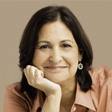Retirement Housing Options for LGBT Seniors
The number of lesbian, gay, bisexual and transgender Americans age 65 and older is projected to reach seven million by 2030.

Five years ago, when David Oscar moved into the Hebrew Home at Riverdale in New York City, he hid the fact that he was gay. At the time, Oscar says he thought it could be used against him. “I grew up at a time when being gay was illegal and some even called it a mental illness,” he says. “My life was very secretive.”
But in 2016, the 86-year-old helped form the LGBT (Lesbian, Gay, Bisexual and Transgender) & Allies support group at the skilled-nursing facility. Since then, Oscar says, “I’m finally able to express that part of my personality that is so important to me. Now I feel at home.”
Many LGBT seniors have long faced difficult housing choices: Move into a traditional retirement community and not disclose their sexual identity, or be open about it and hope that staff, residents and health care professionals don’t judge or shun them.
From just $107.88 $24.99 for Kiplinger Personal Finance
Become a smarter, better informed investor. Subscribe from just $107.88 $24.99, plus get up to 4 Special Issues

Sign up for Kiplinger’s Free Newsletters
Profit and prosper with the best of expert advice on investing, taxes, retirement, personal finance and more - straight to your e-mail.
Profit and prosper with the best of expert advice - straight to your e-mail.
Similarly, LGBT seniors who age in place have had to cross their fingers that their home health aides will treat them respectfully.
“Discrimination and harassment have been going on for decades,” says Kelly Kent, director of the National LGBT Elder Housing Initiative, which is part of LGBT advocacy organization SAGE. A 2014 Equal Rights Center study of fair housing shows that 48% of same-sex couples received different treatment than heterosexual couples when it came to housing deposits and fees, availability, and applications. Today, only 21 states or localities offer fair-housing protections based on sexual orientation or gender identity.
With more LGBT housing initiatives springing up and increased sensitivity training for long-term-care staff and home health agencies, the landscape is changing. And as the number of LGBT seniors grows, housing options geared to this population are likely to increase. Today there are three million LGBT adults age 65 and older in the U.S., and that number is projected to reach seven million by 2030.
From the City to the Country
More retirement housing options of all kinds are being built or retrofitted to serve the aging LGBT community. The majority feature affordable housing apartments in urban areas that offer on-site support services and social opportunities. Among them are John C. Anderson Apartments in Philadelphia and Spirit On Lake in Minneapolis. Federal anti-discrimination laws mean heterosexual seniors can rent there, too.
Two new LGBT developments spearheaded by SAGE are slated to open in New York City in summer 2019: Ingersoll Senior Residences in Brooklyn and Crotona Senior Residences in the Bronx.
While many LGBT 50-plus projects are affordable housing with income restrictions, some are market-rate retirement communities. Fountaingrove Lodge, located in California’s wine country, features luxurious living quarters, gourmet meals, a movie theatre and a spa for independent-living, assisted-living and memory-care residents. Other market-rate communities include Carefree Cove in Boone, N.C., and The Residences at Seashore Point in Provincetown, Mass.
When Fountaingrove Lodge opened in 2014, John Mullen moved into a unit with two bedrooms plus a den, paying a refundable $789,500 entrance fee and a monthly fee of about $5,600. Mullen had been living in San Francisco, but as he grew older and after his partner passed away, “I wanted the company of others,” he says. Residents, both LGBT and heterosexual, have become close friends. “We live like a great, big family,” says Mullen, 81. “It feels like they are all my cousins, brothers and sisters.”
While LGBT seniors now have more options ranging from affordable to luxury housing, “we still have a long way to go,” says SAGE’s Kent. But Kent says he knows of nearly 20 affordable-housing developments under discussion. More market-rate projects are also emerging to meet the needs of wealthier LGBT boomers and seniors.
Profit and prosper with the best of Kiplinger's advice on investing, taxes, retirement, personal finance and much more. Delivered daily. Enter your email in the box and click Sign Me Up.

-
 Stocks Extend Losing Streak After Fed Minutes: Stock Market Today
Stocks Extend Losing Streak After Fed Minutes: Stock Market TodayThe Santa Claus Rally is officially at risk after the S&P 500's third straight loss.
-
 What Bilt Cardholders Need to Know as Wells Fargo Exits the Program
What Bilt Cardholders Need to Know as Wells Fargo Exits the ProgramA major shake-up in the Bilt Rewards program could affect your credit card, rent rewards and points strategy heading into 2026.
-
 3 Major Changes to the Charitable Deduction in 2026
3 Major Changes to the Charitable Deduction in 2026Tax Breaks About 144 million Americans might qualify for the 2026 universal charity deduction, while high earners face new IRS limits. Here's what to know.
-
 I Tried a New AI Tool to Answer One of the Hardest Retirement Questions We All Face
I Tried a New AI Tool to Answer One of the Hardest Retirement Questions We All FaceAs a veteran financial journalist, I tried the free AI-powered platform, Waterlily. Here's how it provided fresh insights into my retirement plan — and might help you.
-
 457 Plan Contribution Limits for 2026
457 Plan Contribution Limits for 2026Retirement plans There are higher 457 plan contribution limits in 2026. That's good news for state and local government employees.
-
 Medicare Basics: 12 Things You Need to Know
Medicare Basics: 12 Things You Need to KnowMedicare There's Medicare Part A, Part B, Part D, Medigap plans, Medicare Advantage plans and so on. We sort out the confusion about signing up for Medicare — and much more.
-
 The Seven Worst Assets to Leave Your Kids or Grandkids
The Seven Worst Assets to Leave Your Kids or Grandkidsinheritance Leaving these assets to your loved ones may be more trouble than it’s worth. Here's how to avoid adding to their grief after you're gone.
-
 SEP IRA Contribution Limits for 2026
SEP IRA Contribution Limits for 2026SEP IRA A good option for small business owners, SEP IRAs allow individual annual contributions of as much as $70,000 in 2025, and up to $72,000 in 2026.
-
 Roth IRA Contribution Limits for 2026
Roth IRA Contribution Limits for 2026Roth IRAs Roth IRAs allow you to save for retirement with after-tax dollars while you're working, and then withdraw those contributions and earnings tax-free when you retire. Here's a look at 2026 limits and income-based phaseouts.
-
 SIMPLE IRA Contribution Limits for 2026
SIMPLE IRA Contribution Limits for 2026simple IRA For 2026, the SIMPLE IRA contribution limit rises to $17,000, with a $4,000 catch-up for those 50 and over, totaling $21,000.
-
 457 Contribution Limits for 2024
457 Contribution Limits for 2024retirement plans State and local government workers can contribute more to their 457 plans in 2024 than in 2023.